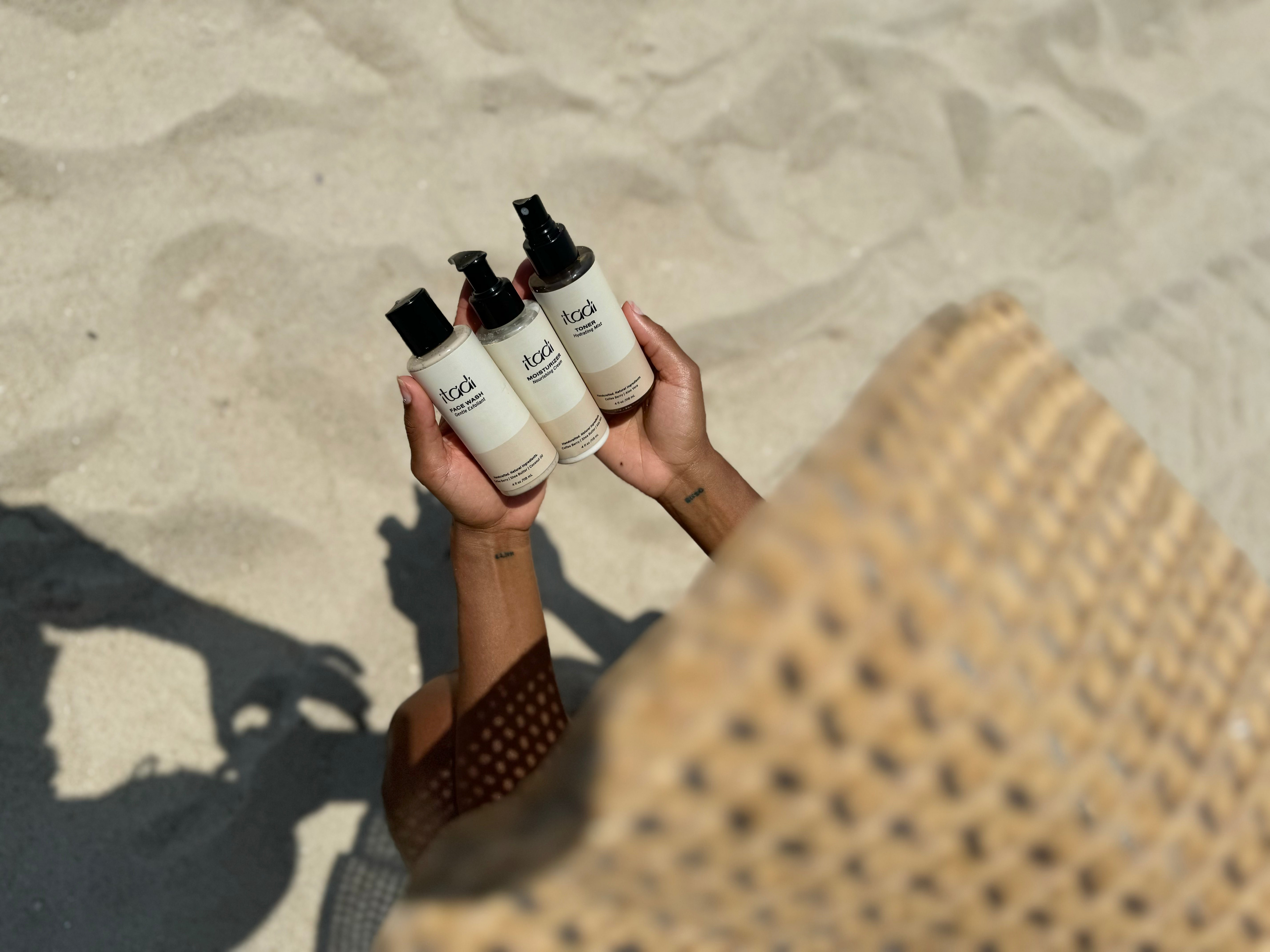Navigating the complex world of skincare ingredients can feel like learning a new language. This guide will help you understand what to look for, what to avoid, and why plant-based alternatives are a game-changer.
Have you ever picked up a skincare product, scanned the ingredient list, and felt completely overwhelmed? You’re not alone. The world of cosmetic chemistry is vast and often confusing, filled with scientific names and unfamiliar compounds. In an industry where marketing claims can be misleading, understanding what’s truly in your products is crucial for making informed decisions about your skin health.
This guide aims to demystify skincare ingredients, empowering you to become a savvy consumer. We’ll explore common ingredients, highlight those to approach with caution, and shine a light on the powerful, gentle benefits of plant-based alternatives. For those seeking a clean, effective, and truly nourishing skincare routine, decoding these labels is your first step towards a healthier glow.
The Good, The Bad, and The Confusing: Common Skincare Ingredients Explained
Skincare ingredients can be broadly categorized by their function. Here’s a look at some of the most common types you’ll encounter:
Hydrators and Humectants
These ingredients attract and bind water to the skin, helping to keep it plump and moisturized.
•Hyaluronic Acid: A powerful humectant capable of holding up to 1,000 times its weight in water. It provides intense hydration, plumping the skin and reducing the appearance of fine lines. Often derived from plant fermentation in clean beauty.
•Glycerin: A widely used, effective humectant that draws moisture from the air into the skin, improving hydration and barrier function.
•Ceramides: Lipids naturally found in the skin barrier. They help to retain moisture and protect against environmental aggressors. Essential for barrier repair.
Emollients and Occlusives
These ingredients create a protective barrier on the skin’s surface to prevent moisture loss and soften the skin.
•Plant Oils (e.g., Jojoba, Argan, Squalane): Lightweight, non-comedogenic oils that mimic the skin’s natural sebum, providing nourishment and barrier support. Squalane, often derived from olives or sugarcane, is a popular clean beauty emollient.
•Shea Butter: A rich, nourishing butter known for its moisturizing and anti-inflammatory properties.
Exfoliants
These ingredients help to remove dead skin cells, promoting cell turnover and revealing brighter, smoother skin.
•Alpha Hydroxy Acids (AHAs): Water-soluble acids like Glycolic Acid (from sugarcane) and Lactic Acid (from fermented corn). They exfoliate the skin’s surface, improving texture and tone.
•Beta Hydroxy Acids (BHAs): Oil-soluble acids like Salicylic Acid (often derived from willow bark). They penetrate oil to exfoliate inside pores, making them ideal for acne-prone skin.
•Fruit Enzymes (e.g., Papain from Papaya, Bromelain from Pineapple): Gentle exfoliants that break down dead skin cells without harsh scrubbing.
Antioxidants
These powerful compounds protect the skin from damage caused by free radicals, which are unstable molecules generated by UV radiation, pollution, and stress.
•Vitamin C (Ascorbic Acid): A potent antioxidant that brightens skin, stimulates collagen production, and protects against environmental damage. Plant-based sources include acerola cherry and camu camu.
•Vitamin E (Tocopherol): Another strong antioxidant that helps protect the skin from oxidative stress and supports skin healing.
•Green Tea Extract: Rich in polyphenols, a type of antioxidant with anti-inflammatory and protective properties.
Anti-Aging and Targeted Treatments
These ingredients address specific concerns like fine lines, wrinkles, and loss of firmness.
•Retinol (Vitamin A): A powerful ingredient for cell turnover and collagen production. In clean beauty, plant-based alternatives like Bakuchiol (from the babchi plant) offer similar benefits with less irritation.
•Peptides: Short chains of amino acids that signal the skin to produce more collagen and elastin, improving firmness and reducing wrinkles.
The "Dirty Dozen" and Beyond: Ingredients to Approach with Caution
While the term "clean beauty" lacks strict regulation, there’s a general consensus on a list of ingredients that many consumers and brands choose to avoid due to potential health concerns. These are often referred to as the "Dirty Dozen" or "Red List" ingredients. Here are some of the most common ones and why they’re a concern:
•Parabens (e.g., Methylparaben, Propylparaben): Used as preservatives, parabens have been linked to endocrine disruption and may mimic estrogen in the body.
•Phthalates (e.g., Dibutyl phthalate, Diethyl phthalate): Often found in synthetic fragrances, phthalates are endocrine disruptors and have been associated with reproductive and developmental issues.
•Sulfates (e.g., Sodium Lauryl Sulfate (SLS), Sodium Laureth Sulfate (SLES)): Harsh cleansing agents that can strip the skin of its natural oils, leading to dryness, irritation, and disruption of the skin barrier.
•Synthetic Fragrances ("Fragrance" or "Parfum"): A single word that can hide hundreds of undisclosed chemicals, many of which are allergens, irritants, or endocrine disruptors.
•Formaldehyde-Releasing Preservatives (e.g., DMDM Hydantoin, Imidazolidinyl Urea): These preservatives slowly release formaldehyde, a known carcinogen and allergen.
•PEGs (Polyethylene Glycols): Used as thickeners, solvents, and humectants, PEGs can be contaminated with 1,4-dioxane, a probable human carcinogen, and ethylene oxide, a known carcinogen.
•Triclosan: An antibacterial agent linked to hormone disruption and antibiotic resistance.
•BHT (Butylated Hydroxytoluene): An antioxidant and preservative that has been linked to skin irritation and potential endocrine disruption.
•Oxybenzone and Octinoxate: Common chemical UV filters found in conventional sunscreens that are known endocrine disruptors and harmful to coral reefs.



0 comments